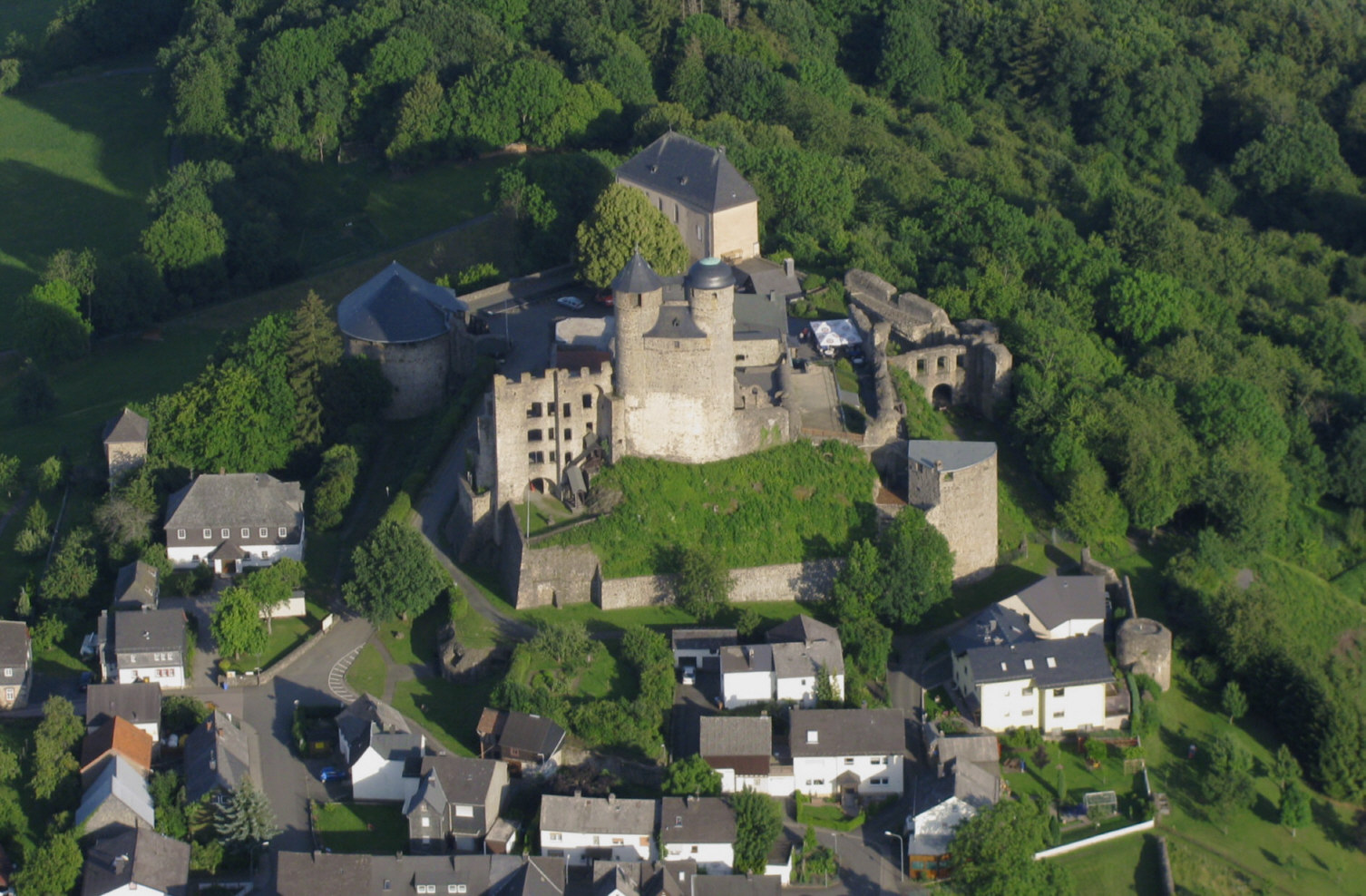Greifenstein Castle
Location of the ruins Greifenstein
The ruins of the castle Greifenstein are above Filisur in the Albula in the Swiss canton of Graubünden.
Location
The ruins of a hilltop castle located high above the village and is easily accessible from the Rhaetian Railway track from a forest path, roughly a quarter of an hour. The top part of the plant can be climbed only with climbing gear today; the way the Clavadetscher / Meyer 1984 mention is no longer accessible.
Nicolin Sererhard wrote in 1740: The old Schlosz Gryfenstein standeth on a very Hochen gächen ( steep ) Büchel.
Plant
The expanded plant was distributed with a large height difference at three altitude levels. The structural relationships are not clear. On the top level, a hard to reach, on all sides vertical rock head stood a tower-like building with an irregular floor plan. It was reached by a staircase cut into the rock with three bends. Chiselled into the rock holes are indicative of a covered wooden gallery.
On the terrace of the middle stage, the main castle, leaning was due to the vertically ascending east wall. Of the original three floors, the bottom is overgrown and filled with debris. The remains of a plateau border enclosing the following have been preserved. In the west wall of windows, a bay window and an apparent miscarriage stone have been preserved. The arrangement of the beam holes in the southwest wall allows only one floor height of 1.5 m; the reason for this classification is not known.
Window in the north wall
North wall to the west
North wall to the east
Location and nature of the buildings are no longer recognizable. Surely here were the living building and a ajar on the north wall chapel, whose rock-cut apse is still in good condition. The 1930 mentioned by Erwin Poeschel paintings, brown belts and ocher and light blue decorations are no longer obtain. South below the chapel was the carved out of rock cistern, which was completed by a wall and released a small opening for the scooping device. The scooping device with hewn beams holes was above the cistern. The gate to the plant was in the southwest part that is worn down to a few residues.
Cistern
Pumping shaft
Room for scooping device
Access to the lowest level
At the lowest level was a spacious terrace. Access was from the east by a narrow access from which ruins and a channel have received a locking bar.
History
Documentary news about the construction of the castle missing, it is assumed a construction period from the second half of the 12th century. Access stone was the center of rule Greifenstein, belonged to the next Filisur also Berguen, Laces, Stulles. The noble free barons of Greifenstein were originated just after the coat of arms with the barons of wild mountain and mountain woman in Ruschein. 1233 Rudolf von Greifenstein is mentioned, who had been involved in the murder of Bishop Berthold and was sent as buses on a crusade; for he received extension until 1237 1243 are attested in a document Vazer Henry and Albert: . ... Hainricus et Albertus de Grifinstain.
Castles and Power Greifenstein went before 1300 at the Wild Berger; either were the Greifensteiner extinct or a branch of them called back Wildenberg. 1297 is a Ortolf, Ammann in grasping stone, as a witness in a document called Wildberger: Ortolfo Ministor in Grifenstein. 1320 pledge Hugo von Wildenberg and his wife Anna von Wildenberg the burch ze Griffenstaein, Bvrguen ( Berguen ) liute and goods for 1150 marks to the Bishopric of Chur.
After several changes of ownership - Planta from Zuoz, Andreas von Marmels, Will Berg, of mud, attacked by griffins stone from Bishop Hartmann - the castle was conquered in 1394 by the troops of the bishop ... and God gave him the Glükh, daz the obgenandt drey Vestinen ( Ramosch, Steinberg and grasping stone) gewannent and erwerent dero of Mätsch and became the episcopal center in the Albula valley. On February 2, 1396 promised the Bishop to leave the people of the reign of their rights and received from them the oath of allegiance ... as we vesti Griffenstain ... violent habent into ours. After further disputes between the mud and the bishop decided in 1421 as the referee Duke Ernst of Austria, that the castles are to remain with the bishopric, but the bishop must compensate the Matscher and Toggenburg for Ramosch and grasping stone with 2,500 marks. In a dispute with Bishop Ortlieb (1458 - 1491) occupied the house of God people, among other things Greifenstein, with Zurich intervened in favor of the bishop.
By the elimination of a right to rule through the communities in 1537 Reaching stone served the Episcopal Reeves as the official residence, then it was abandoned and fell apart quickly. Ulrich Campell mentions destroyed in 1550 as a good part and inside dreary. The roof remained intact until the 19th century. The final disintegration took place after 1840, were used as beams and rough-hewn stones for the construction of the school building.
Window in the north-west wall
View from the south
Wall Demolition of the south wall










